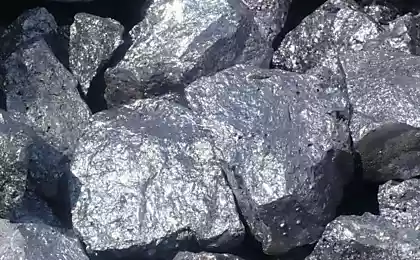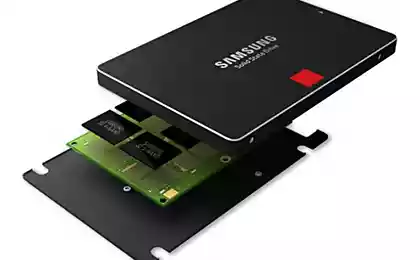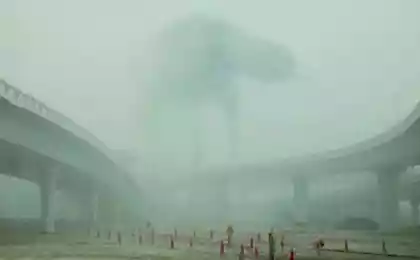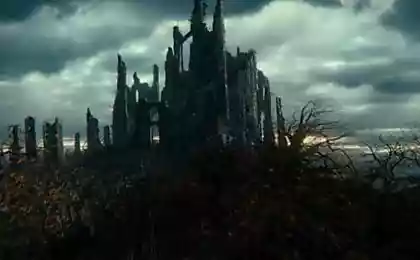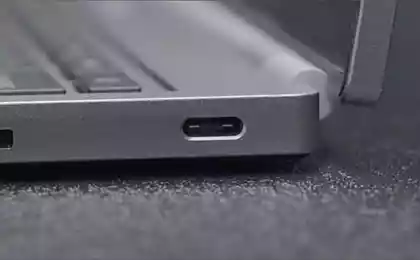909
Forgotten Drives
Bit with Wikipedia:
Computer storage - storage media for recording and storing data. The operation of the memory may lie any physical effect, ensuring reduction of the two or more stable states.
5 photos.
1. The diskette 8 & quot; (Aka "maxi floppy disk»
Structurally diskette 8 "is a disc made of polymeric materials with a magnetic coating enclosed in a flexible plastic pouch. In case there were holes: big round in the center - for the spindle, a small round - window openings index allows to determine the beginning of the sector and rectangular with rounded ends - for magnetic heads of the drive. Also located at the bottom of the recess, removing the sticker from that, it was possible to protect the disc from the recording.
Year: 1971
Developer: IBM
Volume: 80, 256 and 800 kb
1 GB = 12,500, 3906 or 1250 floppy
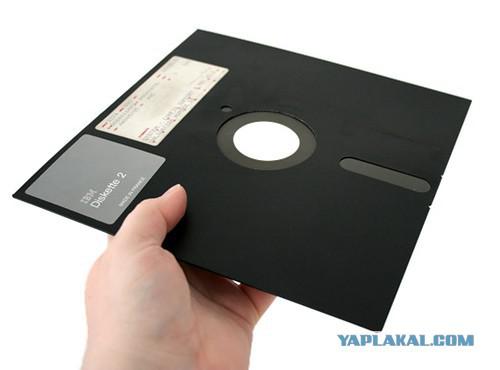
2. LaserDisc (aka «LD»)
The first CD, developed by Philips in the 1969m year. Had a diameter of 30 cm. The possibility of recording was only analog that allows you to record audio and video. The last such drive was officially released in the year 2001m, it was a Japanese movie «Tokyo Raiders».
Year: 1969
Developer: Philips
Volume: 60 minutes + 30 minutes of analog recording
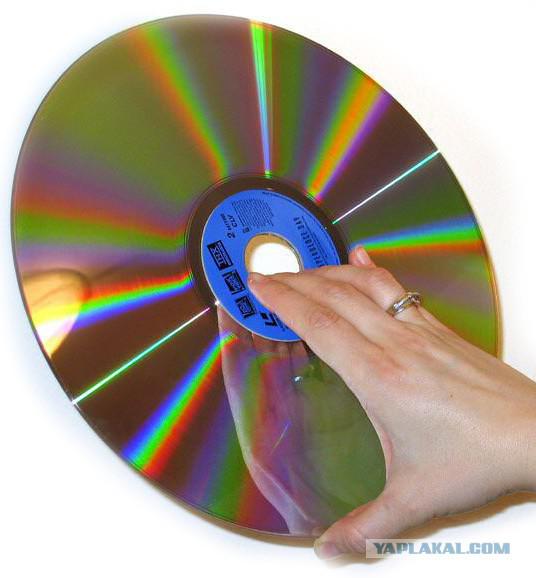
3. Magnetic tape
Computer tape drive for instant recording and storing copies of significant volume data sets. So named by its tape transport system (streamer tape transport).
Year: 1951
Developer: Eckert-Mauchly Computer Corporation
Volume: 360 kb
1 GB = 2777 tapes, the length of 457 meters and a width of 14 mm

4. The punch card
Recording media for use in automatic data processing system. Made of cardboard, card information is the presence or absence of holes in certain positions maps.
Year: 1725
Developer: Basil God
Volume: 4 bits - 4 bytes
1 GB = 2.000.000.000 punched specimen 1728, 250,000,000 punched sample 1964
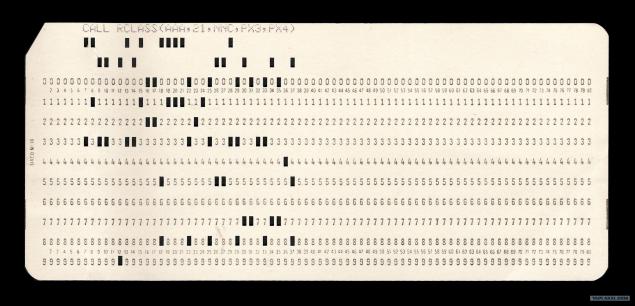
5. Mercury Drive
Mercury was used because of its Acoustic impedance is almost equal to the acoustic impedance piezoelectric crystals. This minimized the energy losses that occur during signal transmission from the chip to the mercury and back. High speed of sound in mercury (1450 m / s) to reduce the waiting time of the pulse arrives at the receiving end, compared with the time waiting in the other, the slower the transmission medium (eg, air), but it also means that a finite number pulses that can be stored in a suitable amount of mercury tubes is restricted. Other negative aspects of the use of mercury was its weight, price and toxicity. Moreover, in order to achieve matching of acoustic impedances as much as possible, the mercury should be kept at a temperature of 40 ° C, which makes the service tubes of mercury hot and uncomfortable work.
Year: 1951
Developer: Moore School of Electrical Engineering
Volume: 1 .179.648 bytes (1.1 MB)
1 GB = 847 such devices
Posted in [mergetime] 1403597177 [/ mergetime]
Actually everything ... On other unusual drive not heard ... Who has something to add, add ...
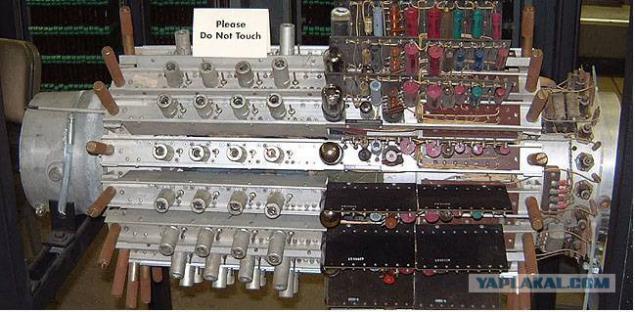
Computer storage - storage media for recording and storing data. The operation of the memory may lie any physical effect, ensuring reduction of the two or more stable states.
5 photos.
1. The diskette 8 & quot; (Aka "maxi floppy disk»
Structurally diskette 8 "is a disc made of polymeric materials with a magnetic coating enclosed in a flexible plastic pouch. In case there were holes: big round in the center - for the spindle, a small round - window openings index allows to determine the beginning of the sector and rectangular with rounded ends - for magnetic heads of the drive. Also located at the bottom of the recess, removing the sticker from that, it was possible to protect the disc from the recording.
Year: 1971
Developer: IBM
Volume: 80, 256 and 800 kb
1 GB = 12,500, 3906 or 1250 floppy

2. LaserDisc (aka «LD»)
The first CD, developed by Philips in the 1969m year. Had a diameter of 30 cm. The possibility of recording was only analog that allows you to record audio and video. The last such drive was officially released in the year 2001m, it was a Japanese movie «Tokyo Raiders».
Year: 1969
Developer: Philips
Volume: 60 minutes + 30 minutes of analog recording

3. Magnetic tape
Computer tape drive for instant recording and storing copies of significant volume data sets. So named by its tape transport system (streamer tape transport).
Year: 1951
Developer: Eckert-Mauchly Computer Corporation
Volume: 360 kb
1 GB = 2777 tapes, the length of 457 meters and a width of 14 mm

4. The punch card
Recording media for use in automatic data processing system. Made of cardboard, card information is the presence or absence of holes in certain positions maps.
Year: 1725
Developer: Basil God
Volume: 4 bits - 4 bytes
1 GB = 2.000.000.000 punched specimen 1728, 250,000,000 punched sample 1964

5. Mercury Drive
Mercury was used because of its Acoustic impedance is almost equal to the acoustic impedance piezoelectric crystals. This minimized the energy losses that occur during signal transmission from the chip to the mercury and back. High speed of sound in mercury (1450 m / s) to reduce the waiting time of the pulse arrives at the receiving end, compared with the time waiting in the other, the slower the transmission medium (eg, air), but it also means that a finite number pulses that can be stored in a suitable amount of mercury tubes is restricted. Other negative aspects of the use of mercury was its weight, price and toxicity. Moreover, in order to achieve matching of acoustic impedances as much as possible, the mercury should be kept at a temperature of 40 ° C, which makes the service tubes of mercury hot and uncomfortable work.
Year: 1951
Developer: Moore School of Electrical Engineering
Volume: 1 .179.648 bytes (1.1 MB)
1 GB = 847 such devices
Posted in [mergetime] 1403597177 [/ mergetime]
Actually everything ... On other unusual drive not heard ... Who has something to add, add ...

